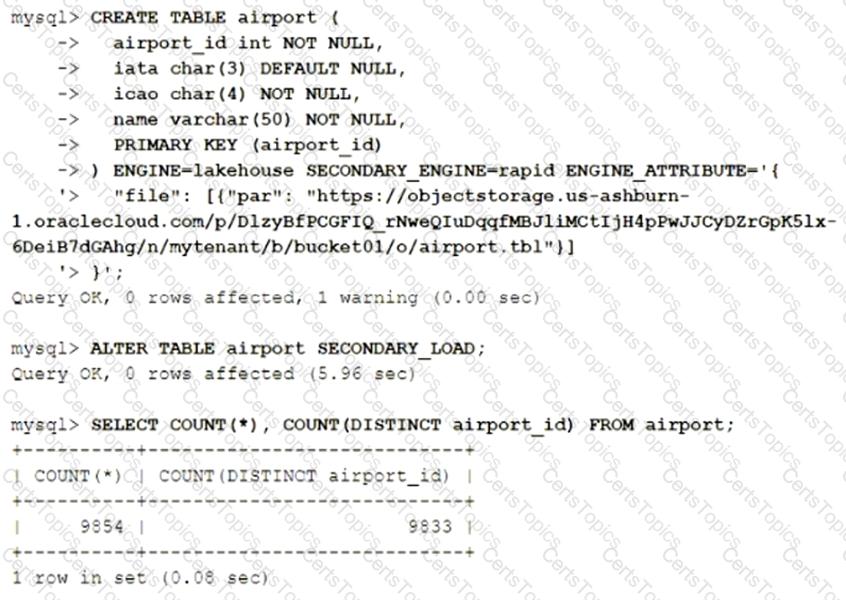Oracle Related Exams
1z0-915-1 Exam







The following statements are executed successfully:

Which two are true? (Choose two.)
Which two are true about MySQL HeatWave configuration resources? (Choose two.)
Which placement is NOT valid for a high-availability DB system? (Note: AD refers to availability domain and FD refers to fault domain.)